Lawn Seeding How To: Tips For Seeding A Lawn
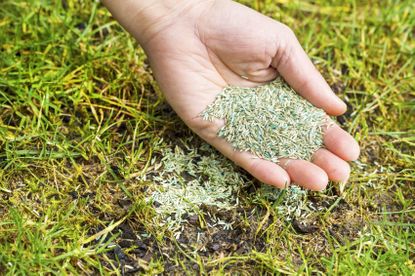

A beautiful lawn doesn’t just happen. Unless you are hiring professional help, you’ll have to prepare the space for seeding, then do all the follow-up and maintenance. Only then do you get to bring out the lawn chairs and umbrella. Read on for tips for seeding a lawn.
Lawn Seeding Tips
If you are seeding your first lawn, roll up your sleeves and prepare to put in more than a few hours. Every task takes time and must be done carefully. If you don’t know what you are doing, follow a lawn seeding how to that will walk you through the necessary steps. The first step is preparing a lawn for seeding.
Preparing a Lawn for Seeding
This is the biggest step, since it requires the most physical effort. First, you’ll need to work the soil to loosen it and allow you to remove weeds and rocks. This is a task that requires careful attention. Grass seed will not grow in compacted soil, so plan to really dig into the soil where you want to spread grass seed. If the soil is loose and moist already, clear of weeds and rocks, you’ll make short work of it. If it’s hard, compact, overgrown or rocky, it will take longer. Use a shovel and a hard rake to break up the soil when you are preparing a lawn for seeding. Dig deep, at least 4 inches (10 cm.) down. If you have a rototiller, this is a good time to use it. Once you’ve broken up the soil and removed weeds and rocks, it’s time to improve the soil. Add compost in a level layer on the prepared lawn soil, then rake it in or turn it in with a shovel. It may be tempting to leave the compost on top of the existing soil and hope for the best. But you really need to mix it in thoroughly. When that’s done, rake through the soil to remove any remaining rocks and pieces of wood. After you have finished preparing a lawn for seeding, it’s time to seed. Consider the grass types that grow best in your area and ask your garden store expert about the pros and cons of different grasses before you buy. The appropriate time to seed your lawn depends on what type of seed you purchase, so take this into account when you are making your selection. Follow instructions about how much seed to use and how to sow it.
Seeded Lawn Care Tips
Once the lawn is seeded, you’ll do best to follow a few important seeded lawn care tips. The first is to mulch the seeded lawn lightly with straw. Cover about 75% of the ground. A light layer of straw holds in moisture and prevents the seeds from blowing away. Irrigation is also very important. Keep the soil damp at all times, but never provide so much water that it will wash away the grass seeds. Different types of grass seeds require different amounts of irrigation. For example, a seeded Bermuda grass lawn must be lightly watered three or four times a day. On the other hand, perennial rye seeds need water twice a day. It may be necessary to water with the hose until the seeds germinate.
Gardening tips, videos, info and more delivered right to your inbox!
Sign up for the Gardening Know How newsletter today and receive a free download of our most popular eBook "How to Grow Delicious Tomatoes."

Teo Spengler has been gardening for 30 years. She is a docent at the San Francisco Botanical Garden. Her passion is trees, 250 of which she has planted on her land in France.
-
 10 Best Apartment Plants To Turn Your Small Space Into An Oasis
10 Best Apartment Plants To Turn Your Small Space Into An OasisThe best apartment plants can lend an ambience of the tropics, brighten up a space, or add a touch of drama, and turn an apartment into a relaxing oasis.
By Amy Grant
-
 Grow a Bathroom Oasis: 8 Best Bathroom Plants With No Light or Low Light
Grow a Bathroom Oasis: 8 Best Bathroom Plants With No Light or Low LightSome apartment dwellers grow the best bathroom plants with no light or low light. Read how one of our favorite plant lovers does it in the big city.
By Teo Spengler
-
 Sustainable Turf Species For A Greener Lawn
Sustainable Turf Species For A Greener LawnClick here for some of the most sustainable types of turf grass you can grow for an eco-friendly lawn.
By Bonnie L. Grant
-
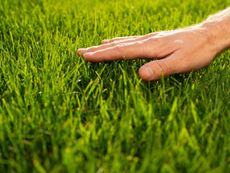 How To Grow A Sustainable Lawn
How To Grow A Sustainable LawnAdjust your thinking about a perfect green lawn and consider more sustainable methods. Click here to learn how.
By Mary Ellen Ellis
-
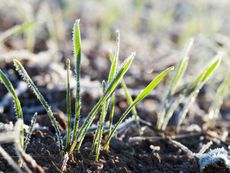 Will Frost Kill Grass Seed And How To Help New Turf Survive
Will Frost Kill Grass Seed And How To Help New Turf SurviveLearn how to help your newly sown grass survive frost and freezing weather.
By Amy Grant
-
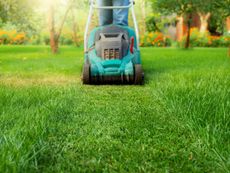 Lawn Problems That Aren’t Really Problems
Lawn Problems That Aren’t Really ProblemsYour lawn may not require as much work as you think. Learn which common problems aren’t really problems.
By Teo Spengler
-
 Why A Manual Push Mower Is Good For You And The Environment
Why A Manual Push Mower Is Good For You And The EnvironmentReel mowers are making a comeback, but why? Click here to learn about reel mower pros and cons.
By Amy Grant
-
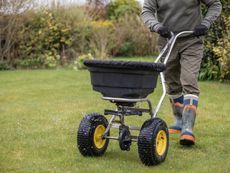 Fertilize Grass In Fall For A Lush Lawn In Spring
Fertilize Grass In Fall For A Lush Lawn In SpringFor everything you need to know about fertilizing your lawn in the fall, click here.
By Susan Albert
-
 Tips For Mowing Stripes In Lawn
Tips For Mowing Stripes In LawnWouldn’t it be great to have stripes in your lawn like a sports field? Learn how here.
By Susan Albert
-
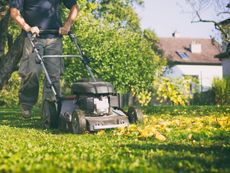 Late Summer Lawn Care Checklist
Late Summer Lawn Care ChecklistPlan to do some late summer care and maintenance of your lawn so it will be healthy and beautiful in the spring. Here are some tips.
By Laura Miller